Dog Flea
- Article
- Dog Flea
Dog Flea
Scientific Name: Ctenocephalides canis
How to identify a dog flea
Fleas are small, wingless insects and species range in size from 1 – 10 millimetres. They are easily recognised by the majority of the world’s population, especially those who own cats or dogs.
The identifying characteristics of fleas are:
-
A laterally compressed body,
-
Greatly enlarged hind legs which enable them to jump long distances,
-
Piercing-sucking mouthparts,
-
Strong tarsal claws which enable them to grasp their hosts, and,
-
Rear pointing hairs and bristles to allow for easy movement through the host’s hair or fur.
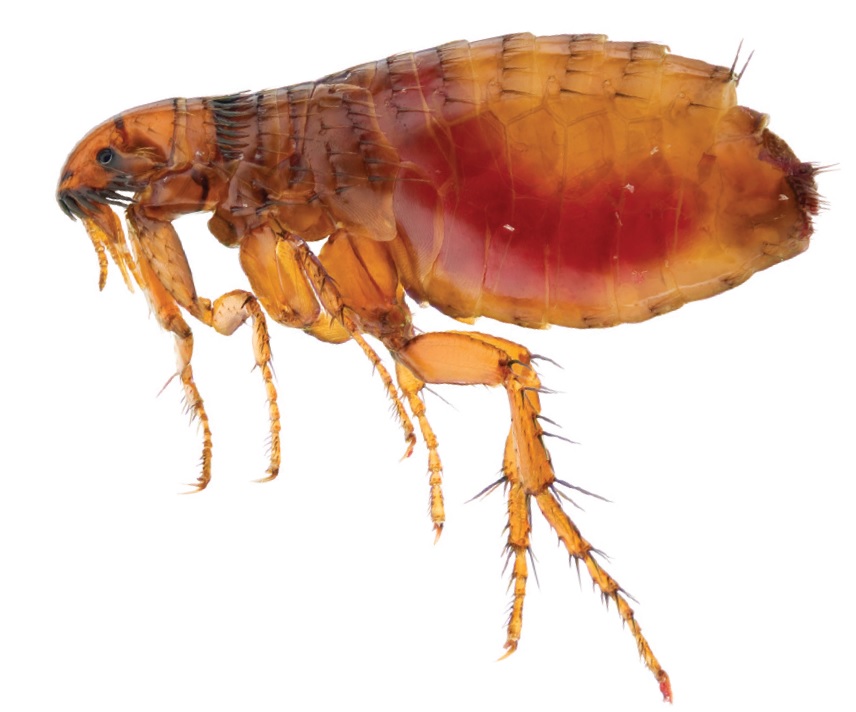
Where are cat fleas commonly found?
Anywhere there are dogs and/or cats are the places where you will most likely find fleas. However, sometimes there are no animals on site but there may be some on adjacent properties. Some people say that they are having problems with “sand fleas” or “grass fleas” but they are really cat or dog fleas as all fleas need an animal host of some type.
Why are dog fleas considered a pest?
A few fleas on adult dogs or cats cause little harm unless the host becomes allergic to substances in the flea's saliva. The disease that results from allergy is called flea allergy dermatitis. Small animals with large infestations can lose enough bodily fluid to fleas feeding that dehydration may result. Cat fleas also may be responsible for disease transmission through humans, and have been suspected as transmission agents of plague. Severe flea infestations can result in anemia due to blood loss.
What is the biology and lifecycle of a dog flea?
Adult fleas mate on their animal host and the resultant nonadhesive eggs fall to the ground beneath. After a blood meal, a female flea can lay 15 – 20 eggs a day and up to 600 in a life time. The eggs hatch in about two days to two weeks into larvae which are found indoors in cracks and crevices, along skirting boards, under rug edges and in furniture or beds. Outdoors, development may take place in a number of locations including kennels, sub-floors and shaded, grassy areas. They especially like sandy gravel soils but can’t exist in dry sunny spots.
Management Tips for Dog Flea
There are three essential co-ordinated, simultaneous steps to a successful flea treatment:
-
Pet treatment,
-
Premises cleaning, and,
-
Insecticide application.
First of all though, we should carry out an inspection of the property. This may seem unnecessary but the homeowner may not really have fleas after all and we need to be certain of the pest identification before we proceed. In a bad infestation, you may not need to even enter the front gate as sometimes the fleas come out to greet you! This is a rare phenomenon fortunately. Just a quick walk through the house should reveal the presence of fleas, especially if you are wearing white socks over your shoes. Make sure that you tuck your trousers into the top of the socks to avoid flea bites. Check for “hot spots” where you can concentrate your chemical application.
You must insist that the client has any animals treated before your application. A Veterinary Surgeon should be consulted for advice on the best product for the job.
A thorough vacuuming or steam cleaning of all interior floor surfaces must take place before you start spraying. Vacuuming will pick up eggs and all stages of the life cycle although larvae tend to “hold on” to carpet fibres and you may only pick up around 20% of the total. The larvae spend the vast majority of the time at the base of the carpet fibres whereas at pupation time, they move higher up the fibres. Vacuuming will also remove dried blood faeces, a major larval food source. All items must be picked up from the floor to ensure best access. Special attention must be paid to where lint and pet hair accumulate and under and in furniture where pets sleep. Make sure that the vacuum bag is thrown in the garbage bin or bag less cleaners are emptied into a garbage bag which is subsequently discarded. Any pet bedding should be thrown away, washed or dry cleaned.
Outdoors, the grass must be closely mown to enable thorough treatment. Advise the person mowing to apply insect repellent before starting. Soil areas may need to be dampened down to enable the insecticide to penetrate. Always read the insecticide label thoroughly and follow all recommendations listed before commencing your treatment.
PRODUCT SOLUTIONS
-
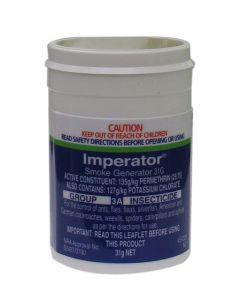 Imperator Smoke Generator Insecticide135g/kg Permethrin
Imperator Smoke Generator Insecticide135g/kg PermethrinFor the control of ants, flies, silverfish, cockroaches, weevils, spiders, caterpillars and aphids in commercial, industrial, domestic and public service areas, in glasshouses (ornamentals only) and in agricultural buildings including animal housing.
-
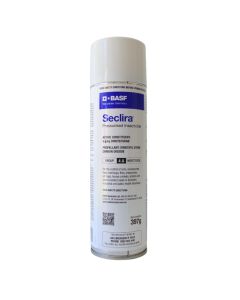 Seclira Pressurised Insecticide 397g5g/kg Dinotefuran
Seclira Pressurised Insecticide 397g5g/kg DinotefuranSeclira Pressurised Insecticide is a fast-acting, non-repellent, ready-to-use product with System III compatibility for the control of a broad range of pests including ants, and cockroaches.
-
 Fendona Plus 60SC Insecticide60g/L Alpha-Cypermethrin
Fendona Plus 60SC Insecticide60g/L Alpha-CypermethrinFendona Plus 60SC Insecticide is a residual insecticide for control of ants, cockroaches, silverfish, fleas, flies, mosquitos bed bugs, meal moths and spiders in domestic, industrial, commercial and public health situations and for the control of litter beetles in poultry sheds.
-
 Perigen Defence 500EC Residual Insecticide500g/L Permethrin
Perigen Defence 500EC Residual Insecticide500g/L PermethrinPerigen Defence 500 Residual Insecticide is registered for the control of cockroaches, spiders, fleas, ants and more in domestic and commercial situations.
-
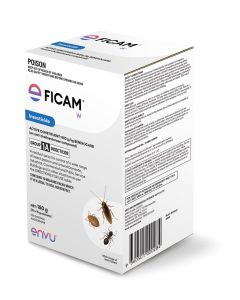 Ficam W Insecticide800g/kg Bendiocarb
Ficam W Insecticide800g/kg BendiocarbFicam W Insecticide is a non-repellent, broad-spectrum residual spray registered for the control of cockroaches, flies, spiders, fleas, ants, silverfish, bed bugs, millipedes and other insect pests.
-
 Coopex Dust Insecticidal Dusting Powder10g/kg Permethrin
Coopex Dust Insecticidal Dusting Powder10g/kg PermethrinCoopex Dust Insecticidal Dusting Powder is registered for the control of cockroaches, ants, fleas, silverfish and bed bugs in and around domestic and industrial premises, food preparation and storage areas. Also for control of mushroom flies in mushroom housing and bees in wall cavities.
-
 Biflex Mikron Insecticide64g/L Bifenthrin, 53g/L Acetamiprid
Biflex Mikron Insecticide64g/L Bifenthrin, 53g/L AcetamipridBiflex Mikron Insecticide provides lightning fast control and enduring residual protection from the powerful combination of two active ingredients in a cutting-edge microemulsion formulation.
-
 Biflex Aqua Max Insecticide and Termiticide100g/L Bifenthrin
Biflex Aqua Max Insecticide and Termiticide100g/L BifenthrinBiflex AquaMax is the first ever Professional Strength, multi-insecticide and termiticide. Effective on a wide range of common household pests and all termite species in Australia.
-
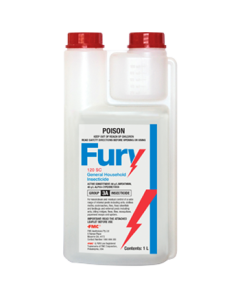 Fury 120 SC Insecticide 1L80g/L Bifenthrin, 40g/L Alpha-Cypermethrin
Fury 120 SC Insecticide 1L80g/L Bifenthrin, 40g/L Alpha-CypermethrinFury 120 SC Insecticide is specifically formulated to create a superior, longer-lasting strength general insecticide that works in two powerful ways to rid your clients of all general household pests.
-
 Biforce 100SC Termiticide and Insecticide100g/L Bifenthrin
Biforce 100SC Termiticide and Insecticide100g/L BifenthrinBiforce 100SC Termiticide & Insecticide is a water-based termiticide for pre and post construction management of termites inside and out and for general perimeter application of most crawling insects.
-
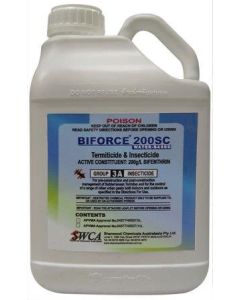 Biforce 200SC Termiticide and Insecticide200g/L Bifenthrin
Biforce 200SC Termiticide and Insecticide200g/L BifenthrinBiforce 200SC Termiticide & Insecticide is a professional strength water-based termiticide for pre and post construction management of termites inside and out.
-
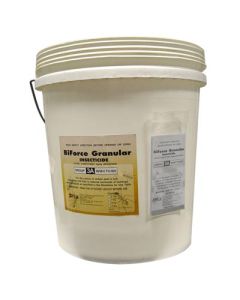 Biforce Granular Insecticide2g/kg Bifenthrin
Biforce Granular Insecticide2g/kg BifenthrinA ready to use contact residual granular insecticide for external control of ants, fleas and ticks in areas such as gardens, lawns, around BBQs and other external surrounds of buildings and structures.
-
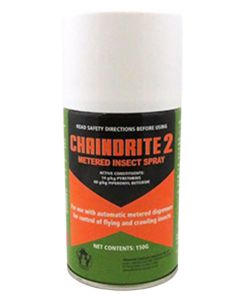 Chaindrite 2 Metered Insect Spray14g/kg Natural Pyrethrin + 60g/kg Piperonyl Butoxide
Chaindrite 2 Metered Insect Spray14g/kg Natural Pyrethrin + 60g/kg Piperonyl ButoxideLow odour natural pyrethrin insecticide for professional pest managers to eliminate flies and insects. This is a synergist aerosol designed to be used in atomiser units such as Bobson and Timemist metered spray units.
-
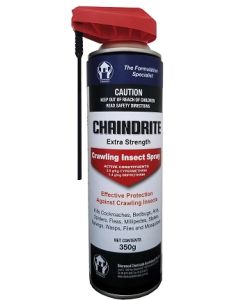 Chaindrite Extra Strength Crawling Insect Spray1.4g/kg Imiprothin and 2g/kg Cypermethrin
Chaindrite Extra Strength Crawling Insect Spray1.4g/kg Imiprothin and 2g/kg CypermethrinChaindrite Crawling Insect Spray is a new low odour oil-based professional aerosol insecticide with a powerful flush and kill effect on cockroaches. Chaindrite is an easy to apply aerosol “without the splutter”.This product is an excellent knockdown and flushing agent and has long term residual activity.
-
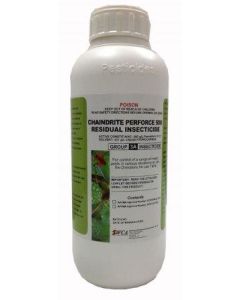 Chaindrite Perforce 500 Residual Insecticide500 g/L Permethrin
Chaindrite Perforce 500 Residual Insecticide500 g/L PermethrinChaindrite Perforce 500 Residual Insecticide is formulated for the control of a broad range of insects in various situations as per the Directions for Use table.
-
 Ensnare Pro 50SC Insecticide 1L50g/L Indoxacarb
Ensnare Pro 50SC Insecticide 1L50g/L IndoxacarbEnsnarePRO is a non-repellent residual suspension concentrate spray. It can be used in conjunction with baits without reducing the performance of the bait. Ants, cockroaches and flies don’t know it’s there. The ‘non-repellent’ properties of this formulation does not interfer with insects natural behaviour...
-
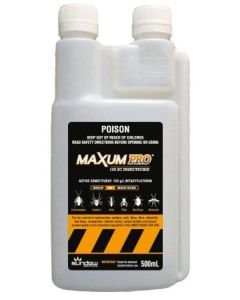 Maxum PRO 125 SC Insecticide 500mL125g/L Beta Cyfluthrin
Maxum PRO 125 SC Insecticide 500mL125g/L Beta CyfluthrinMaxumPRO is a robust, fast-acting, knock-down, broad spectrum insecticide for general insect control in domestic and commercial situations, as well as for the control of pest insects of turf and ornamental plants.
-
 Starrdust Pro Duckbill + ‘One-Shot’ 400g20g/kg Permethrin 40:60, 5g/kg Triflumuron
Starrdust Pro Duckbill + ‘One-Shot’ 400g20g/kg Permethrin 40:60, 5g/kg TriflumuronThe StarrdustPRO ‘ONE-SHOT’ is a ready-to-use pod that screws straight onto the StarrdustPRO DUCKBILL Duster head. It is prefilled with 400 grams of premium StarrdustPRO Industrial Strength dusting powder.
-
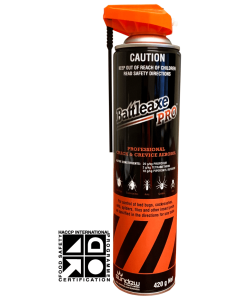 Battleaxe Pro Aerosol 420g20g/kg propoxur, 2g/kg tetramethrin, 10g/kg piperonyl butoxide
Battleaxe Pro Aerosol 420g20g/kg propoxur, 2g/kg tetramethrin, 10g/kg piperonyl butoxideBattleaxe PRO Professional Crack & Crevice is an aerosol formulation containing both long lasting and vapour-acting knockdown components.
-
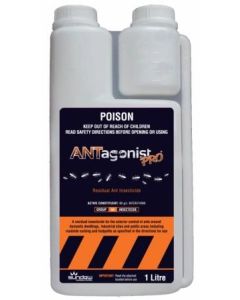 Antagonist Pro Insecticide80g/L Bifenthrin
Antagonist Pro Insecticide80g/L BifenthrinANTagonist PRO insecticide is a suspension concentrate formulation containing a Polymer Enhanced Synthetic Pyrethroid approved for the treatment of ants, spiders, wasps, cockroaches, mosquitoes, midges, fleas, flies, ticks, termites and turf pests including lawn armyworms, sod webworms, argentine stem weevil, billbug, African black beetle, ants and ornamental pest including mites, aphids, caterpillars, loopers, earworm, budworm, light brown apple moth, whitefly, mealybug, thrips and cutworms.
-
 Demand 100CS Insecticide100g/L Lambda-Cyhalothrin
Demand 100CS Insecticide100g/L Lambda-CyhalothrinDemand 100CS is a cost effective and long lasting insecticide for the controls of ants, cockroaches, fleas, flies, mosquitoes, silverfish, ticks and spiders for up to up to 12 months indoors and up to 3 months outdoors. It can be applied to foliage for up to 14 weeks of mosquito control.
-
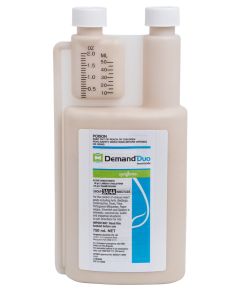 Demand Duo Insecticide 750mL38g/L Lambda-Cyhalothrin, 125g/L Thiamethoxam
Demand Duo Insecticide 750mL38g/L Lambda-Cyhalothrin, 125g/L ThiamethoxamDemand Duo Insecticide is a general pest spray that controls a wide range of pests, simply and effectively. The unique ZC formulation combines a suspension concentrate (SC) of Thiamethoxam and capsule suspension (CS) of Lambda-cyhalothrin. It is registered for the control of pests including ants, bedbugs, cockroaches, fleas, flies, portuguese millipedes, paper wasps, spiders and more.
Out of stock -
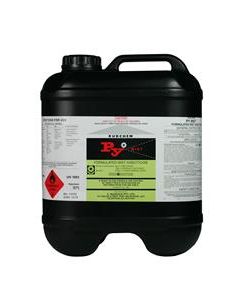 PY Mist Insecticide4g/L Pyrethrins, 12g/L Piperonyl Butoxide
PY Mist Insecticide4g/L Pyrethrins, 12g/L Piperonyl ButoxidePY Mist is a ready to use insecticide for the control of a range of insect pests and is applied using a cold fogger / portable fogging machine.
-
 Delta Pro 25SC Professional Insecticide25g/L Deltamethrin
Delta Pro 25SC Professional Insecticide25g/L DeltamethrinFor the control of a range of insect pests such as spiders, cockroaches, flies, ants, mosquitoes in various situations.
-
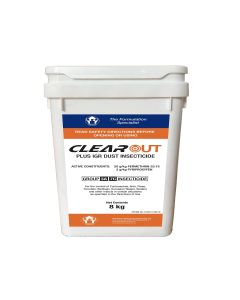 Clear Out Plus IGR Dust Insecticide 8kg Bucket20g/kg Permethrin, 2g/kg Pyriproxyfen
Clear Out Plus IGR Dust Insecticide 8kg Bucket20g/kg Permethrin, 2g/kg PyriproxyfenClearOut Plus IGR Dust Insecticide is a dual active dustable powder containing Permethrin and Pyriproxyfen for the control of adult and juvenile insects. ClearOut Plus IGR Dust Insecticide is formulated as a light, dustable powder featuring two modes of action in one application to provide a quick knockdown combined with a juvenile insect hormone regulator to stop the breeding life cycle.
-
 Starycide Insect Growth Regulator (IGR)48 g/L triflumuron
Starycide Insect Growth Regulator (IGR)48 g/L triflumuronStarycide is an insect growth regulator (IGR) registered for the control of silverfish, immature fleas and cockroaches in indoor and outdoor situations, and container breeding mosquitoes outdoors.
-
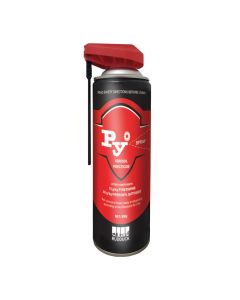 PY Spray Aerosol Insecticide10 g/kg pyrethrin and 50 g/kg piperonyl butoxide
PY Spray Aerosol Insecticide10 g/kg pyrethrin and 50 g/kg piperonyl butoxidePY Spray Aerosol Insecticide is a ready to use professional aerosol for control of a range of insect pests in various situations. Suitable for crack and crevice applications. PY Spray Aerosol Insecticide is an industrial strength spray, suitable for flushing or as a space spray.
-
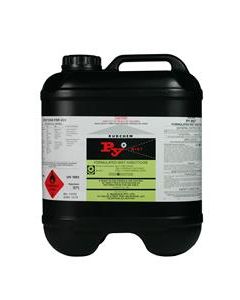 PY Fog Insecticide4g/L Pyrethrins, 12g/L Piperonyl Butoxide
PY Fog Insecticide4g/L Pyrethrins, 12g/L Piperonyl ButoxidePY Fog is a ready to use, broad spectrum insecticide for the control of a range of insect pests in various situations using a thermal fogging machine.
-
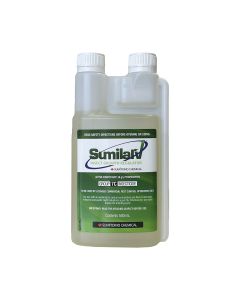 Sumilarv Insect Growth Regulator (IGR) Insecticide 500mL20 g/L Pyriproxyfen
Sumilarv Insect Growth Regulator (IGR) Insecticide 500mL20 g/L PyriproxyfenSumilarv Insect Growth Regulator is registered for use with an adulticide to control cockroaches and fleas in domestic, industrial and public health situations.
-
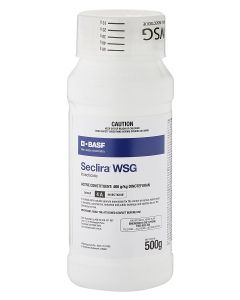 Seclira WSG Insecticide400g/kg Dinotefuran
Seclira WSG Insecticide400g/kg DinotefuranSeclira® WSG insecticide is a non-staining, odourless, broad spectrum, general insect control product for indoor and outdoor use.
-
 Temprid 75 Residual Insecticide50g/L Imidacloprid, 25/gL Beta-cyfluthrin
Temprid 75 Residual Insecticide50g/L Imidacloprid, 25/gL Beta-cyfluthrinTemprid Residual Insecticide is registered for the use in the management of ants, cockroaches, spiders, fleas and bed bugs (including pyrethroid-resistant) in various domestic, commercial, industrial and public buildings.
-
 Cislin 25 Professional Insecticide25g/L Deltamethrin
Cislin 25 Professional Insecticide25g/L DeltamethrinCislin 25 Professional Insecticide is a broad spectrum low odour insecticide with excellent residual activity.
-
 Biflex Ultra Lo-Odour 100EC Termiticide & Insecticide100g/L Bifenthrin, 533g/L Liquid Hydrocarbons
Biflex Ultra Lo-Odour 100EC Termiticide & Insecticide100g/L Bifenthrin, 533g/L Liquid HydrocarbonsBiflex Ultra-Lo-Odour Termiticide and Insecticide is a cost-effective, broad spectrum, long residual, liquid insecticide and termiticide for use as an internal and external treatment of a wide range of pests.
-
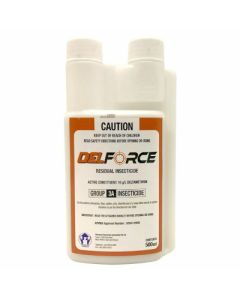 Delforce Residual Insecticide 10SC10g/L Deltamethrin
Delforce Residual Insecticide 10SC10g/L DeltamethrinDelforce Residual Insecticide 10SC is a water-based insecticide for the quick knockdown of spiders and general insects at very low doses. Delforce is also formulated for the control cockroaches, fleas, spiders, ants, silverfish and of a range other insects.
-
 Suspend Flexx Insecticide25g/L Deltamethrin
Suspend Flexx Insecticide25g/L DeltamethrinSuspend Flexx Insecticide is a synthetic pyrethroid (3A) formulation for the knockdown and residual control of a range of insect pests in various indoor and outdoor situations.
-
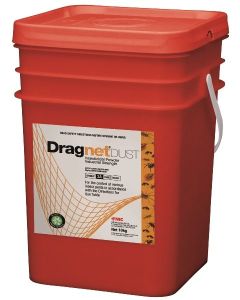 Dragnet Dust Insecticidal Powder2% Permethrin
Dragnet Dust Insecticidal Powder2% PermethrinDragnet Dust Insecticidal Powder is a 2% permethrin, broad-spectrum insecticide dust designed to reach into limited access areas. Dragnet Dust's super-fine formulation gives excellent coverage and spread. It is registered for the control of ants, spiders, fleas, cockroaches, silverfish, bed bugs, wasps, and bird mites in domestic, institutional & industrial premises. Also for the control of hide beetles, mushroom, sciarid flies and Potato moths.
-
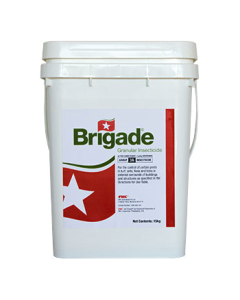 Brigade Granular Insecticide2g/kg Bifenthrin
Brigade Granular Insecticide2g/kg BifenthrinBrigade Granular Insecticide is formulated for the control of certain pests in turf and for control of ants, fleas and ticks in external surrounds of buildings and structures. Permit held for application in potting media for use in container grown ornamentals to control Red Imported Fire Ants for various intervals.
-
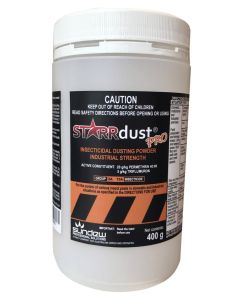 Starrdust PRO One-Shot Insecticidal Dust 400g20g/kg Permethrin, 5g/kg Triflumuron
Starrdust PRO One-Shot Insecticidal Dust 400g20g/kg Permethrin, 5g/kg TriflumuronThe Starrdust PRO One-Shot Insecticidal Dust 400g is an industrial-strength dust designed for use with the Starrdust PRO Duckbill Duster. It is a ready-to-use broad-spectrum insecticide with a unique formulation. It controls a wide range of insect pests including cockroaches, silverfish, spiders, ants, fleas, carpet beetles, bed bugs, European wasps, feral honey bees, bird mites, subterranean termites, hide beetles, millipedes, woodlice and clothes moths.
-
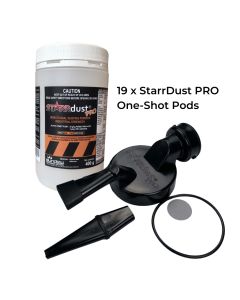 Starrdust PRO One-Shot Insecticidal Dust 19 x 400g + Duckbill20g/kg Permethrin, 5g/kg Triflumuron
Starrdust PRO One-Shot Insecticidal Dust 19 x 400g + Duckbill20g/kg Permethrin, 5g/kg TriflumuronA convenient kit of 19 x Starrdust PRO One-Shot Insecticidal Dust 400g Pods and a bonus Duckbill Duster. StarrDust PRO is an industrial-strength dust designed for use with the Starrdust PRO Duckbill Duster. It is a ready-to-use broad-spectrum insecticide with a unique formulation. It controls a wide range of insect pests including cockroaches, silverfish, spiders, ants, fleas, carpet beetles, bed bugs, European wasps, feral honey bees, bird mites, subterranean termites, hide beetles, millipedes, woodlice and clothes moths.
-
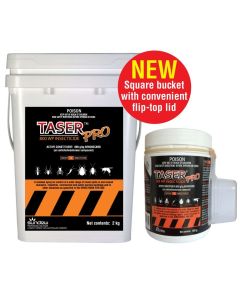 Taser Pro 800 WP Insecticide800g/L Bendiocarb
Taser Pro 800 WP Insecticide800g/L BendiocarbTaser Pro Insecticide is a residual broad spectrum non-repellent spray for the control of a wide range of insect pests in domestic, farm, agricultural, industrial, commercial and public service buildings.
-
 Tempo Residual Insecticide 1L25 g/L betacyfluthrin
Tempo Residual Insecticide 1L25 g/L betacyfluthrinTempo Residual Insecticide is a fast-acting, knock-down, broad-spectrum insecticide for general insect control in domestic and commercial situations, as well as for the control of pest insects of turf and ornamental plants.
-
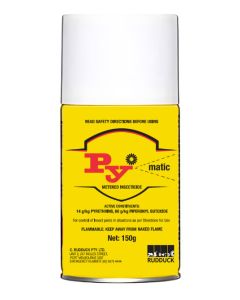 PyMatic Metered Aerosol InsecticidePlease buy in multiples of 12
PyMatic Metered Aerosol InsecticidePlease buy in multiples of 12PyMatic Metered Insecticide is registered for use in automatic aerosol dispensers for total insect control in enclosed areas. Py Matic aerosol will dispense approx. 3,000 metered sprays and provide control for up to 30 days.
-
 Starrdust PRO Insecticidal Dust20g/kg Permethrin 40:60, 5g/kg Triflumuron
Starrdust PRO Insecticidal Dust20g/kg Permethrin 40:60, 5g/kg TriflumuronStarrdust PRO Insecticidal Dust is a ready-to-use, broad spectrum insecticide with a unique formulation. It controls a wide range of insect pests including cockroaches, silverfish, spiders, ants, fleas, carpet beetles, bed bugs, European wasps, feral honey bees, bird mites, subterranean termites, hide beetles, and 3 new pests not on any dust product in Australia – millipedes, woodlice and clothes moths.
-
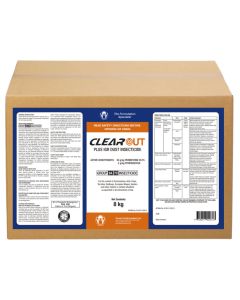 Clear Out Plus IGR Dust Insecticide 8kg Carton20g/kg Permethrin, 2g/kg Pyriproxyfen
Clear Out Plus IGR Dust Insecticide 8kg Carton20g/kg Permethrin, 2g/kg PyriproxyfenClearOut Plus IGR Dust Insecticide is a dual active dustable powder containing Permethrin and Pyriproxyfen for the control of adult and juvenile insects.
-
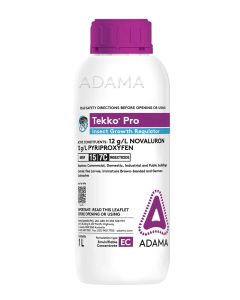 Tekko Pro Insect Growth Regulator 1LNovaluron 12 g/L + Pyriproxyfen 12 g/L
Tekko Pro Insect Growth Regulator 1LNovaluron 12 g/L + Pyriproxyfen 12 g/LTekko Pro is an insect growth regulator registered for the control of flea larvae, immature brown-banded cockroaches and german cockroaches. Tekko Pro Insect Growth Regulator contains 2 insect growth regulators with different modes of action: Novaluron and Pyriproxyfen.
-
 Clear Out IGR Dust Insecticide Pods (11 Pods x 350g)20g/kg Permethrin, 2g/kg Pyriproxyfen
Clear Out IGR Dust Insecticide Pods (11 Pods x 350g)20g/kg Permethrin, 2g/kg PyriproxyfenClearOut IGR Dust Insecticide Pods bring the proven performance of ClearOut Plus IGR Insecticide Dust into a compact, easy-to-use 350g pod. Designed for professional pest controllers, these pods eliminate the hassle of decanting — simply screw your duster directly onto the pod using the adaptor and start applying.
JOIN OUR NEWSLETTER NOW!
Be the first to hear about the latest specials, products, tips and ideas.

